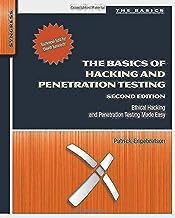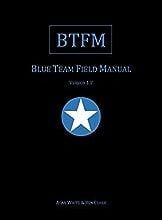The Basics of Hacking and Penetration Testing: Ethical Hacking and Penetration Testing Made Easy
by Patrick Engebretson

Rating: 4.5/5
Review:
Hey there, tech enthusiasts and cyber-curious friends! Today, we’re diving deep into an essential read for anyone intrigued by the world of cybersecurity: The Basics of Hacking and Penetration Testing, penned by the talented Patrick Engebretson. Just as the title promises, this book opens the door to the mysterious world of hacking and makes understanding its basics a breeze. It’s a gem that deserves a spotlight on our bookshelf, proudly boasting a 4.5/5 rating! If you’ve ever wondered about the nitty-gritty of hacking or how those cybersecurity experts do their magic, this is your go-to guide.
Curious about what treasures lie inside? Well, Patrick masterfully breaks down the world of penetration testing into a straightforward 4-step adventure. Imagine this:
- Look Around (Reconnaissance): It’s like being a detective, observing and gathering clues about a system without being noticed.
- Check for Weak Spots (Scanning): Think of it as examining a fortress, searching for any tiny cracks or openings to get inside.
- Get Inside (Exploitation): This is where the fun begins, using techniques to sneak inside and see what’s going on.
- Stay Inside (Maintaining Access): Once in, it’s all about keeping that secret passage open for future exploration.
Navigating the vast ocean of cybersecurity can be overwhelming, but with Patrick’s map, you’ll never feel lost. And the journey is made even more exciting with hands-on experiments! The book morphs into an interactive lab, guiding you through real-world scenarios. For instance, using Metasploit, you learn to launch simulated attacks, whereas with Nessus, you can detect vulnerabilities in a system. Patrick’s approach ensures you grasp not only the ‘how’ but also the ‘why’ behind each action. It’s learning, experimenting, and understanding all bundled into one.
And here’s a golden nugget – a dedicated chapter on communication! Patrick emphasizes, “Doing an awesome test and not communicating it well is like baking a delicious cake and not sharing it.” It’s essential to articulate your discoveries, whether to a client or your team, ensuring your hard work doesn’t go unnoticed.
However, every coin has two sides. While the book is a treasure trove for newcomers, seasoned experts might yearn for deeper waters. Additionally, the rapidly evolving cyber landscape means that some of the tools and techniques discussed might seem a tad old-school. Nevertheless, for those stepping into this intriguing world or needing a brisk jog down memory lane, this book is a trusty companion.
Ever played a captivating video game? Think of this book as the initial, engaging levels of that game. It’s meticulously crafted for newcomers, offering them a gateway into the mysterious realms of hacking and penetration testing. You’d start your journey armed with tools like Metasploit to simulate mock attacks or perhaps use Nessus to scout for potential system vulnerabilities.
For the pros who’ve been around the cyber block, while the book might feel a bit like a beginner’s tutorial, there’s a charm in revisiting the basics. It’s akin to a seasoned gamer enjoying the classic levels, rekindling old memories, or perhaps using the book as a teaching aid, guiding the next generation of cyber enthusiasts.
In conclusion, if you’ve ever harbored a curiosity about the intricate dance between hackers and defenders, Patrick Engebretson’s guide offers a delightful first step. He aptly states, “Defending a fortress is easier when you know its vulnerabilities.” This book, with its array of tools and techniques, acts as a beacon, lighting the path to that knowledge. Ready to embark on a cyber adventure? Dive into this book!




